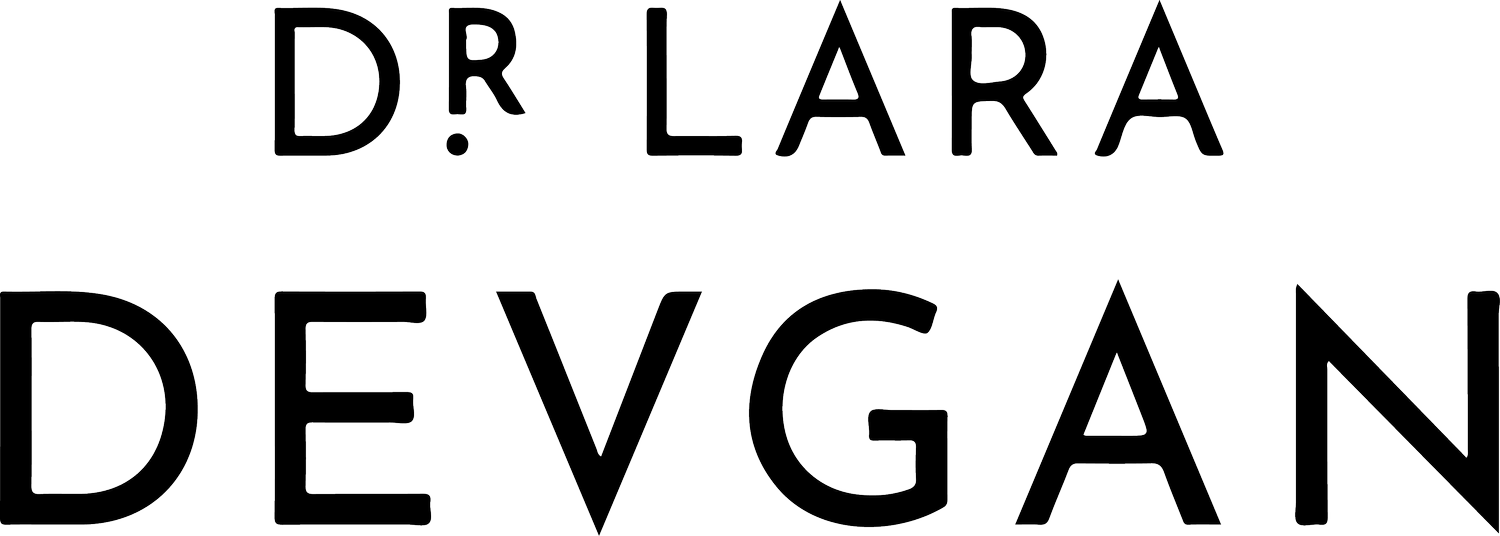Actual patient of Dr. Devgan, before and after submental liposuction
Submental liposuction (or microliposculpture of the double-chin area) is one of the most popular aspects of my New York City plastic surgery private practice. While submental liposuction is a powerful procedure with an extremely high degree of patient satisfaction, it is also a complex topic. This was an invited article for online physician magazine Healio.com about the ins and outs of submental liposuction. The intended audience is medically oriented, so some portions of this article are more technical. -Dr. Devgan
Submental Liposuction: A powerful technique for sculpting the lower face
By Dr. Lara Devgan
How the face changes as we age
The young, slim face has a characteristic "inverted cone of youth"-- a triangular shape like that is narrow at the chin and wider at the cheeks.
As we age, gain weight, develop unfavorable patterns of fat deposition, and experience tissue laxity setting in, this cone becomes more of a square. The jawline becomes thicker and less distinct, a double-chin develops, and jowling becomes more apparent.
Traditional methods for addressing facial aging
Although facelift and necklift are considered the gold standard procedures for addressing facial aging as a whole, younger patients and patients who would like to have a quicker recovery with fewer incisions tend to shy away from these procedures. For this subpopulation, submental liposuction is an excellent option.
Submental liposuction
Submental liposuction, or microliposculpture of the area under the chin, is a minimally invasive contouring procedure for the lower face. Using one to three tiny 0.5 cm incisions placed in inconspicuous locations, an experienced plastic surgeon is able to refine and define the lower face.
Patient selection and technical considerations
The critical first step in submental liposuction is analyzing the patient. The best candidates for the procedure are those with excess pre-platysmal fat, a "double-chin," or the appearance of a heavy, square-shaped, bottom-heavy face. For those with platysmal banding, excessively thin skin, inelastic tissue, or minimal fat in this area, submental liposuction may not be as effective an option.
Marking
Once I have determined that a patient is a good candidate for the procedure, I mark the patient in a seated position while he or she holds a hand mirror to actively participate in the process. Problematic or bothersome pockets of fat are identified and circled. I also take a moment to mark the planned incision sites (0.5cm stab incisions at the submental crease and in the post-auricular sulcus bilaterally. Finally, I mark the angle of the mandible and the presumed course of the marginal mandibular nerve bilaterally.
Anesthesia
Submental liposuction can be done wide awake with tumescent local anesthesia only, or with IV sedation. For patients who are combining submental liposuction with another procedure (such as blepharoplasty-- a common pairing), I recommend IV sedation, or twilight anesthesia. For healthy patients who are comfortable with the idea of surgery, being awake is an acceptable option.
Surgical technique
After sterilely prepping and draping the patient, I infiltrate 50-100cc of tumescent solution composed of 1% lidocaine, 1 ampule of epi, and 1 liter of lactated ringers into the subcutaneous tissue of the neck. I let the tumescent solution sit for 5 to 7 minutes so that the vasoconstrictive effects of the epinephrine can take effect.
Next, I incise the previously marked liposuction access sites and dissect them open with iris scissors. At this point, I perform judicious liposuction of the preplatysmal fat according to my previously noted markings.
When performing liposuction of the neck area, it is important to use fine-tipped cannulae that are in a sufficiently deep plane so as not to create contour abnormalities or divets. I am also careful to liposuction in a cross-hatched pattern to ensure a smooth and aesthetically pleasing result. Liposuction is performed from one to three of the aforementioned access sites; using three sites is ideal because of the lower risk of creating contour problems.
Pitfalls and Complications
The most common complication of submental liposuction is contour abnormality, including notching, divets, and irregular appearance of the skin. This can be avoided by carefully performing liposuction according to the principles of ideal liposuction techniques.
Another complication is injury to the surrounding structures of the neck, in particular, the marginal mandibular branch of the facial nerve, as well as nearby arteries and veins. This is avoided by thorough anatomic knowledge of this challenging anatomic area.
Alternatives
The two major alternatives to submental liposuction are Kybella and necklift.
Kybella (deoxycholic acid) is a new injectable medication that will dissolve submental fat after several treatments. While Kybella has the advantage of offering no downtime at all, this treatment can take several sessions. In addition, patients experience profound swelling that can last for weeks.
Necklift (including short-scar necklift) is a surgical technique that involves tightening the platysma, SMAS, and substructure of the face and facial skin. This is an extremely effective technique for rejuvenating the under-the-chin area, and I consider it to be the gold standard treatment. The downside of necklift is the fact that it is major surgery that requires a week of downtime from work.
Submental liposuction is an excellent intermediate option, between Kybella and necklift, and it carries with it many benefits from both sides.
For questions about this article, I can be reached via www.LaraDevganMD.com.














